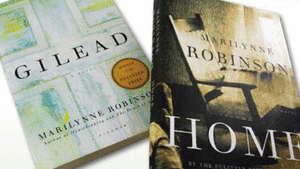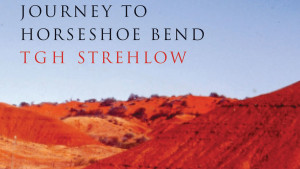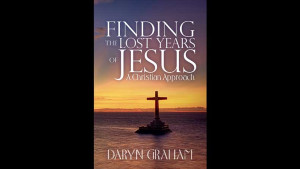 Biographies tend to focus on exceptional rather than “ordinary” individuals, but Australian novelist Kate Grenville has written One Life (Text), the biography of her mother Nance Russell. partly because "not many voices like hers are heard." And once we hear her voice we realise that no-one is "ordinary" or "unexceptional."
Biographies tend to focus on exceptional rather than “ordinary” individuals, but Australian novelist Kate Grenville has written One Life (Text), the biography of her mother Nance Russell. partly because "not many voices like hers are heard." And once we hear her voice we realise that no-one is "ordinary" or "unexceptional."
This book is a tribute especially to women who make their mark in quet ways. In one sense, Nance's story is the epitome of the saying, “Life is what happens when you are making other plans” and she is often distanced from the eventsnin her life. “What mysteries we all are to each other,” she (or Grenville) says at one point. There is an ache in the writing, a sense that life is full of mistakes and making-up, but Grenville’s skills as a novelist are also on display. She works the ebb and flow of chapters, which may begin with the march of events but finish on a moment of reflective revelation. She attends to the little details and inhabits her mother’s thoughts, which is a brave thing to do with a parent— imagining the good and bad, and being honest about their humanness
 The little details—condensation beading on a water jug, the drape of a garment, gruesome descriptions of combat—help bring the Bible’s King David to vivid life in Geraldine Brooks’ The Secret Chord (Hachette), inspired by Leonard Cohen’s song “Hallelujah” and her son learning to play the harp. Most of us are familiar with the outline of David’s story:
The little details—condensation beading on a water jug, the drape of a garment, gruesome descriptions of combat—help bring the Bible’s King David to vivid life in Geraldine Brooks’ The Secret Chord (Hachette), inspired by Leonard Cohen’s song “Hallelujah” and her son learning to play the harp. Most of us are familiar with the outline of David’s story:
shepherd kills the giant Goliath, plays the harp, befriends the king’s son, becomes the victim of the king’s jealousy, takes the throne, becomes an adulterer then is penitent. Brooks adds novelistic flesh to the bibli-
cal bones, polishing David’s multifaceted character, with its cunning, honesty, inspiration, ruthlessness and love. The book deals with food, war, wives and heirs, and is told by the wary and weary prophet Nathan, who David asks to chronicle his life and who at times sounds like the writer of Ecclesiastes, aware of the fleeting glory—and David is the most glorious of all—of kings.
 Van Gogh’s Ghost Paintings by Cliff Edwards (Cascade) is an intriguing little book that asks a rather odd question:
Van Gogh’s Ghost Paintings by Cliff Edwards (Cascade) is an intriguing little book that asks a rather odd question:
what do two paintings that Vincent van Gogh destroyed tell us about his spiritual life? Van Gogh was fascinated by the life of Christ and in particular Christ’s experience in the Garden of Gethsemane before His crucifixion. Van Gogh saw in Christ’s agonising a mirror of his own artistic and mental struggles, and on two occasions he tried to paint the scene, before scraping off the canvasses. They exist now only as descriptions in Van Gogh’s copious and extraordinary letters. We think of Van Gogh as a painter of landscapes and still life images, but his work is filled with what the poet Gerald Manley Hopkins called “the grandeur of God.” Van Gogh loved the religious paintings of Delacroix and Rembrandt, and art lover and professor of religion Cliff Edwards helps us see some of Van Gogh’s depictions of sowers, wheat fields, olive groves and vineyards as subtle recreations of biblical parables, in the process prompting us to question what exactly religious art is.
 In The Territories of Science and Religion (University of Chicago), Peter Harrington argues that the story of a long-term historical war between science and religion is a modern myth, not because they have always been in harmony but because the two categories are recent inventions and using the terms to talk about what went on before the modern era is about as useful as talking about medieval automobiles. Even for the ancient Greeks, often propagandised as the first scientists, the study of the natural world had a moral purpose, as it did for Christians from Augustine of Hippo through to the late Middle Ages. “Science” meant a mental habit that one could and should equally apply to spiritual matters. In fact, until recently there were only “sciences” plural, a distinction lost when we now lump together as “science” such disparate pursuits as sociology and atomic physics. As for “religion,” that only came to be contrasted with scientific method from the seventeenth century onwards, when it moved from being primarily a matter of the heart to a set of propositions to which a particular group needed to give assent. Harrington’s important book suggests that not only are modern conceptions of the historical relationship between science and religion inaccurate, the persistent characterisation of a conflict between them is unhelpful to both.
In The Territories of Science and Religion (University of Chicago), Peter Harrington argues that the story of a long-term historical war between science and religion is a modern myth, not because they have always been in harmony but because the two categories are recent inventions and using the terms to talk about what went on before the modern era is about as useful as talking about medieval automobiles. Even for the ancient Greeks, often propagandised as the first scientists, the study of the natural world had a moral purpose, as it did for Christians from Augustine of Hippo through to the late Middle Ages. “Science” meant a mental habit that one could and should equally apply to spiritual matters. In fact, until recently there were only “sciences” plural, a distinction lost when we now lump together as “science” such disparate pursuits as sociology and atomic physics. As for “religion,” that only came to be contrasted with scientific method from the seventeenth century onwards, when it moved from being primarily a matter of the heart to a set of propositions to which a particular group needed to give assent. Harrington’s important book suggests that not only are modern conceptions of the historical relationship between science and religion inaccurate, the persistent characterisation of a conflict between them is unhelpful to both.
 In The Hands (Wakefield), the latest novel from South Australian, Stephen Orr, Trevor Wilkie, his wife and sons, his grumbling, swearing father, and extended family live on a cattle station beyond Port Augusta, and beyond viability. The book is far from
In The Hands (Wakefield), the latest novel from South Australian, Stephen Orr, Trevor Wilkie, his wife and sons, his grumbling, swearing father, and extended family live on a cattle station beyond Port Augusta, and beyond viability. The book is far from
a rural romance, harking back to an older, fiercer Australian tradition of depicting the unforgiving nature of life on the land. The Wilkies’ often grim, plodding life is broken only by tragedy. Characters bottle feelings and get on with it, always hoping the next season will be better. Orr has sympathy for their roughness and toughness, and sees through their eyes, such as when a deflated balloon is likened to a dead newborn calf. Within the narrative of no-nonsense prose is a carefully constructed tension between tradition and the need to move on, between the hopes of varying generations, and between differing ideas of where home and happiness can be found.






